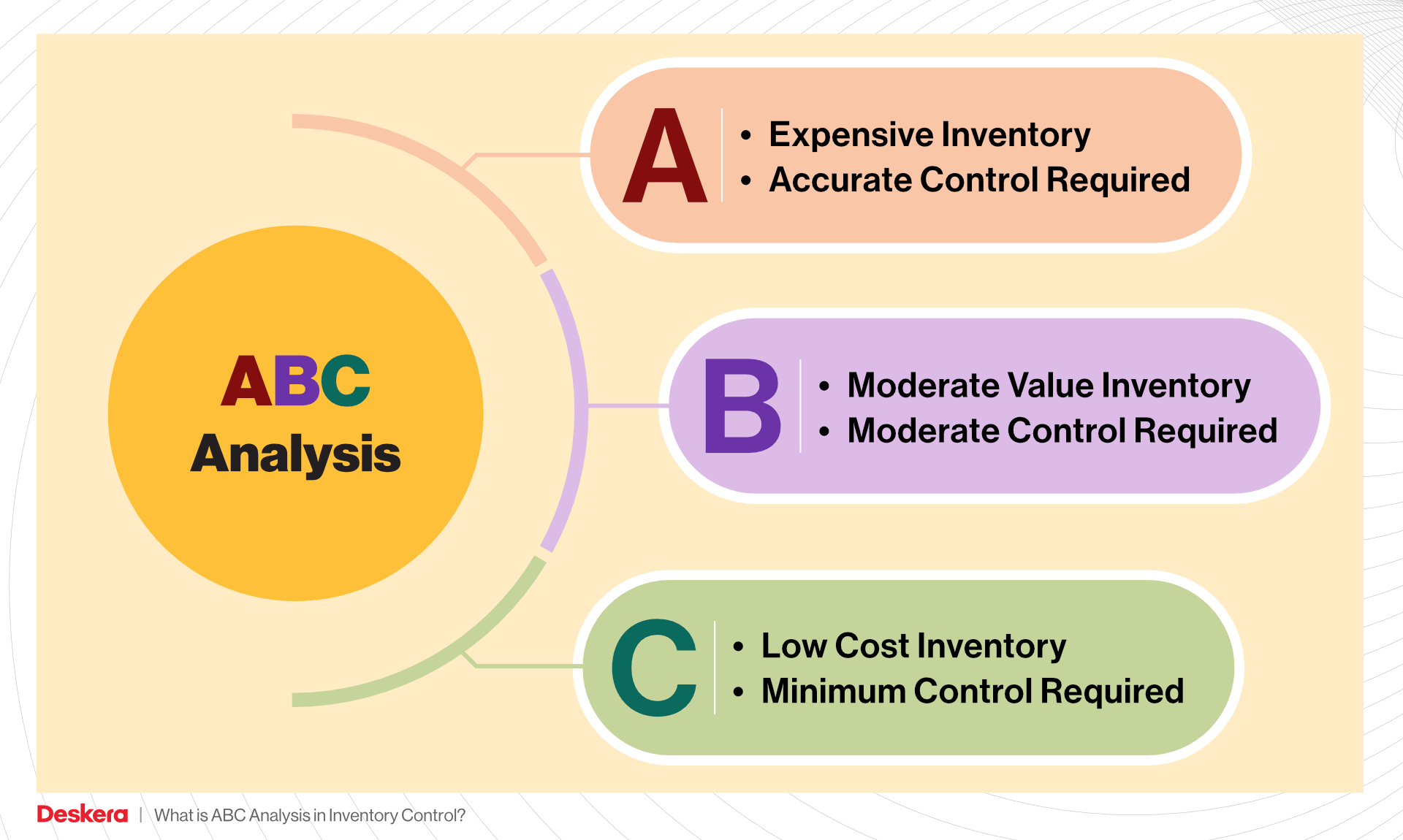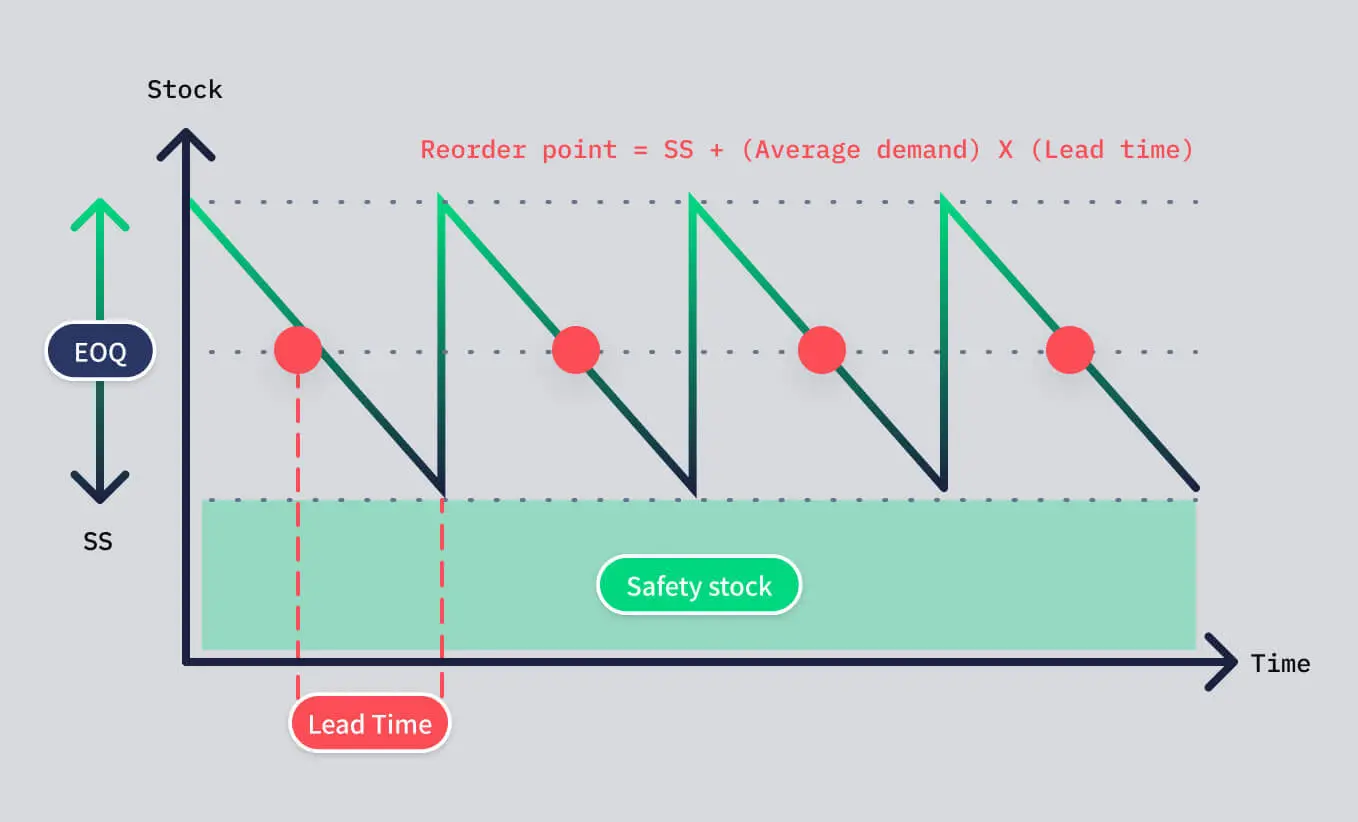If your business deals with physical goods, then you would already be aware of how inventory management can affect every aspect of the business, from profitability to customer satisfaction. Optimizing the flow of goods from the suppliers to the customers needs to be planned to the minutest detail. It can be difficult to balance demand with the supply of goods, due to fluctuating demand, supply lead times, and availability. For this reason, businesses use various strategies to balance having just the right amount of goods at the right time. Anticipation inventory is one of these strategies.
What is Anticipation Inventory?
With accurate forecasting, it is possible to predict when there will be spikes in demand for particular products. A business can accumulate extra inventory in preparation for these times of higher demand. This extra inventory is called anticipation inventory. Anticipation inventory is also known as seasonal or speculative inventory because forecasting is somewhat speculative and is very much influenced by seasons and holidays. There are several aspects that influence anticipation inventory, such as seasonal demand. This is due to influences like the weather (think winter clothing), the holidays (Christmas gifts and decorations), or school supplies (think school stationary at the start of a new academic year). Another influence is currency fluctuations (taking advantage of a strong exchange rate), inflation (stock up before prices go up, and then sell the items at a higher price), or political instability (the start of the Ukraine/Russian war when sunflower oil prices skyrocketed). It is also influenced by supply disruptions (ban on importing fertilizers from Russia), strikes, and natural disasters. Its purpose could also be to reduce set-up costs and smooth production schedules (avoiding last-minute rushes to produce enough fireworks to celebrate Diwali or the Fourth of July).
There are two types of anticipation inventory. Planned anticipation inventory, which is deliberately accumulated and planned using forecasting and market analysis. The second type is unplanned anticipation inventory, which is unintentionally accumulated due to mistakes in forecasting or over-ordering.
Comparison: Anticipation Inventory vs Safety Stock
Some of the aspects of anticipation inventory can sound similar to safety stock. While both are strategies to cope with supply and demand and avoid stockouts, there are some key differences that are important to highlight. Safety stock is based on the fact that demand and supply can often be unpredictable and acts as a buffer, or backup stock, during times of unanticipated fluctuations. This makes safety stock a reactive strategy to something unexpected. In contrast, anticipation inventory is very much based on anticipated demand, which makes it proactive in preparation for the impending demand.
Some other key differences are that anticipation inventory is held over a longer period of time and replaced only when the next season or holiday comes around, is seasonal or cyclical, and is more visible and planned. Safety stock is held for shorter periods of time and replaced as soon as it has been used, making it more constant, and it is more hidden and unplanned. Anticipation inventory is more focused on increasing customer satisfaction, sales, and market share. Safety stock is more focused on avoiding customer dissatisfaction and lost sales, as well as stockouts. It is important to be aware of the fact that both strategies can, however, increase inventory costs.
Why is Anticipation Inventory Essential?
In today’s highly competitive and volatile business world, with all its complex supply chains, anticipation inventory is absolutely crucial. It can be the exact reason a business is able to meet customer expectations and keep up with their preferences, which are constantly changing due to the influence of social media and seasonal trends. It can help a business avoid unhappy customers and lost sales by reducing the chances of stockouts. It can make a business more productive and efficient while optimizing its utilization of resources. It is effective in increasing profits while reducing costs due to buying in bulk, giving you better discounts. It hedges businesses against risks, such as political instability and inflation. There is also the benefit of improved forecasting, with the use of market trends and historical data. All these benefits show how essential anticipation inventory is when it comes to gaining a competitive edge while coping with uncertainty and achieving operational excellence. Let us dive even deeper into the world of benefits a company can enjoy when employing the use of anticipation inventory!
Benefits of Anticipation Inventory
Customer Satisfaction
Customer Satisfaction is certainly a huge benefit. When customers’ needs and preferences are met, it results in happy customers. Anticipation inventory ensures you always have stock to suit every season, occasion, and preference. Satisfied customers, due to consistent reliability and quality, increase a brand’s positive image.
Prevention of Stockouts
Prevention of Stockouts is another important benefit. When demand exceeds supply it can result in stockouts. This results in unhappy customers and lost sales, which all have a negative impact on a business. This can be avoided with anticipation inventory, as it ensures that there is always enough inventory to meet demand, even when there are supply disruptions.
Improved Efficiency
Improved Efficiency is also a great benefit of anticipation inventory. It balances the production and distribution cycles with the consumption cycles, thereby ensuring smooth production schedules and increased efficiency. It also reduces lead time so there is a shorter wait between placing your order and receiving your product.
Cost Reduction
Cost Reduction benefits every business. Anticipation inventory enables one to make the most of price discounts, bulk purchases, and favorable exchange rates. Buying in bulk not only achieves a better price per unit but also cuts down on transportation costs because everything comes in one shipment.
Better Forecasting
Better Forecasting is last, but not least. Anticipation inventory gives you a truly accurate demand forecast by taking into account historical data, customer behavior, and market trends. It also incorporates promotional effects and seasonal patterns. This makes inventory planning so much better as it determines your reorder point, optimal inventory level, and replenishment strategy.
Disadvantages and Challenges of Anticipation Inventory
With any strengths, however, there will come challenges. Let us highlight a list of the most common challenges linked to anticipation inventory so that you and your company are more prepared to know what to look out for and which behaviors and practices to avoid.
Storage Costs
Storage costs are most certainly higher when stocking anticipation inventory. The extra inventory costs more in terms of space, security, insurance, damage, and depreciation.
Risk of Excess or Obsolete Inventory
Risk of excess or obsolete inventory is a very real risk with anticipation inventory, due to the possibility of over-ordering or over-production. Inaccurate forecasting can result in excess stock and wasted inventory, that loses value or expires and is no longer sellable.
Loss of Flexibility
This can occur due to anticipation inventory using up precious capital, space, and resources. Without those three things, it leaves a business with no flexibility to be able to respond to market changes or product innovations.
Increased Complexity
Increased Complexity because of the degree of difficulty and uncertainty that is involved in anticipation inventory management. The complexity is compounded by the number of variables and trade-offs involved, as well as the amount of analysis and coordination required.
Practical Applications of Anticipation Inventory
There are many different scenarios where anticipation inventory can be applied successfully, depending on the nature of the products, the supply, and the demand. Here are a few scenarios in which anticipation inventory is a perfect fit.
Seasonal Products
Seasonal products need the help of anticipation inventory in order to be able to meet the seasonal demand and prevent stockouts. Because seasonal products are in high demand during certain periods only, anticipation inventory allows a business to build up inventory in advance before the peak season, and deplete it during the off-season. Building up the inventory before peak demand also allows a business to take advantage of any special prices that come up during the year.
Rapidly Evolving Products
Rapidly evolving products have a short life span and are often subject to frequent change, such as fashion items and electronics. Customers want the latest product while it is still trendy and exciting. Anticipation inventory helps you stock up before a new product launch and helps a business create a buzz around the launch because they have a new item in stock that other businesses are still awaiting delivery on.
Raw Materials
Raw materials are crucial for production. This includes products such as metals, wood etc. If there is a shortage in the supply of raw materials, it would halt production. Anticipation inventory aids a business in holding enough materials to be able to continue production even when supply is uncertain, or when prices soar, making you less dependent on suppliers, and more able to take advantage of fluctuating prices.
Perishable Goods
Perishable goods are any goods that come with an expiry date, such as food or medicine. Anticipation inventory helps a business hold just enough inventory to meet demand, while not ending up with wastage due to spoilage or obsolescence. This also increases the quality and freshness of products.
How to Effectively Manage Anticipation Inventory
When applied correctly, anticipation inventory is an excellent strategy to help cope with fluctuating demand and supply. However, this strategy is only effective when managed correctly. Here are some techniques and tools to effectively manage anticipation inventory.
Demand Forecasting
Demand forecasting – a common thread in all Intuendi articles. With the use of market trends and historical data, demand forecasting can help you determine the future demand for a product, as well as calculate its optimal level. It can even predict demand spikes and seasonal variation. It simultaneously monitors the actual demand, allowing a business to make adjustments to its anticipation inventory
Safety Stock Analysis
Safety stock analysis is the process of calculating the minimum amount of inventory needed to prevent stockouts from happening. It is complementary to anticipation inventory as it provides a buffer against random fluctuations in supply and demand. It optimizes anticipation inventory by minimizing any excess or obsolete inventory.
Lead Time Management
This works by coordinating the supply chain to improve efficiency, and reduce the lead time between placing an order and receiving the product. A shorter time gap reduces the need for anticipation inventory, and more frequent replenishment helps improve flexibility and responsiveness.
Reorder Point
Reorder point calculates the ideal inventory level and can help a business avoid under or overstocking anticipation inventory. It tells you at which point to place a new order, and takes into account the lead times and expected demand, ensuring that you have enough inventory to last until the next delivery.
Service Level Agreements (SLAs)
Many businesses have a contract between the suppliers and the customers, committing to a level of service, such as delivery time, penalties for non-compliance, etc. These contracts can help regulate the anticipation inventory by setting the standards for the parties in the supply chain.
Inventory Classification
This is the process of grouping and prioritizing inventory items according to their value or demand. There are various methods that can be used, such as the ABC analysis, or the EOQ model. Inventory classification helps to simplify the anticipation inventory by reducing the number of categories to manage.

Inventory Monitoring
Inventory levels can be tracked and measured by the use of tools such as barcodes, RFID, or IoT. This gives you real-time visibility and accuracy of the status of the inventory and gives you better control over the anticipation inventory. It also provides insight into the trends and inventory performance, allowing for better decision-making and planning.
Replenishment Strategies
This strategy helps optimize anticipation inventory, by balancing the trade-offs between inventory costs and the level of service. Through the periodic review, or the continuous review policies you can determine how and when to replenish inventory. Replenishment strategies also make your anticipation more adaptable.
Implementing an Anticipation Inventory Strategy
To reap the many benefits of anticipation inventory, it is important to carefully follow best practices and to use the appropriate techniques along the way. There are many factors to consider when implementing an anticipation inventory strategy. Below, we have highlighted some of the main factors.
- Careful analysis of supply and demand patterns, variability, and product uncertainty, with the use of market research, historical data, and customer feedback.
- Forecasting future demand using various qualitative techniques, artificial intelligence, or statistical methods.
- Using mathematical models or simulations to determine the optimal level of anticipation inventory.
- Coordinating and aligning with suppliers, distributors, and customers, using clear communication and negotiation.
- Using indicators and audits to continuously monitor the effectiveness and performance of the anticipation inventory.
- Improving the anticipation inventory through regular updating and reviews, using feedback and learning.
Using Software to Monitor Anticipation Inventory
Monitoring anticipation inventory can seem like an overwhelming task. Fortunately, there are software systems available that simplify the process by automating, enhancing, and integrating the inventory management process. There are many benefits that need mentioning. Inventory management requires a large amount of data to be stored and processed. Systems such as ERP or POS can collect this data from various sources and process it far quicker than a human could, and with fewer errors. With the use of tools such as dashboards or charts, software can analyze and report the data. Software is also integral in the forecasting, planning, and optimization of anticipation inventory. It does this by using complex algorithms and models such as regression, or linear programming. The software can give you better control by using technologies such as barcodes and RFID to accurately track and measure anticipation inventory. Software also helps to share information with the supply chain partners, making communication and coordination far more efficient.
Using software can improve the efficiency and accuracy of inventory management, while simultaneously reducing costs and errors, but it is not without its challenges. The initial cost of the software can be expensive, and maintaining and updating the software requires the use of resources and the help of experts. Software is not always compatible with all other systems, making integration difficult. Your data is not always secure, leaving you vulnerable to hackers, etc. If the software is outdated or inflexible, it can make it difficult to adapt to changes in supply and demand, product innovations, or customer preferences. Choosing the right software for your business that also fits your budget, and your specific needs and goals is extremely important.
Intuendi is a best-in-class AI-driven demand forecasting software which, integrating seamlessly with your systems, uses advanced AI and ML techniques to plan anticipation inventory. Request a demo now!







